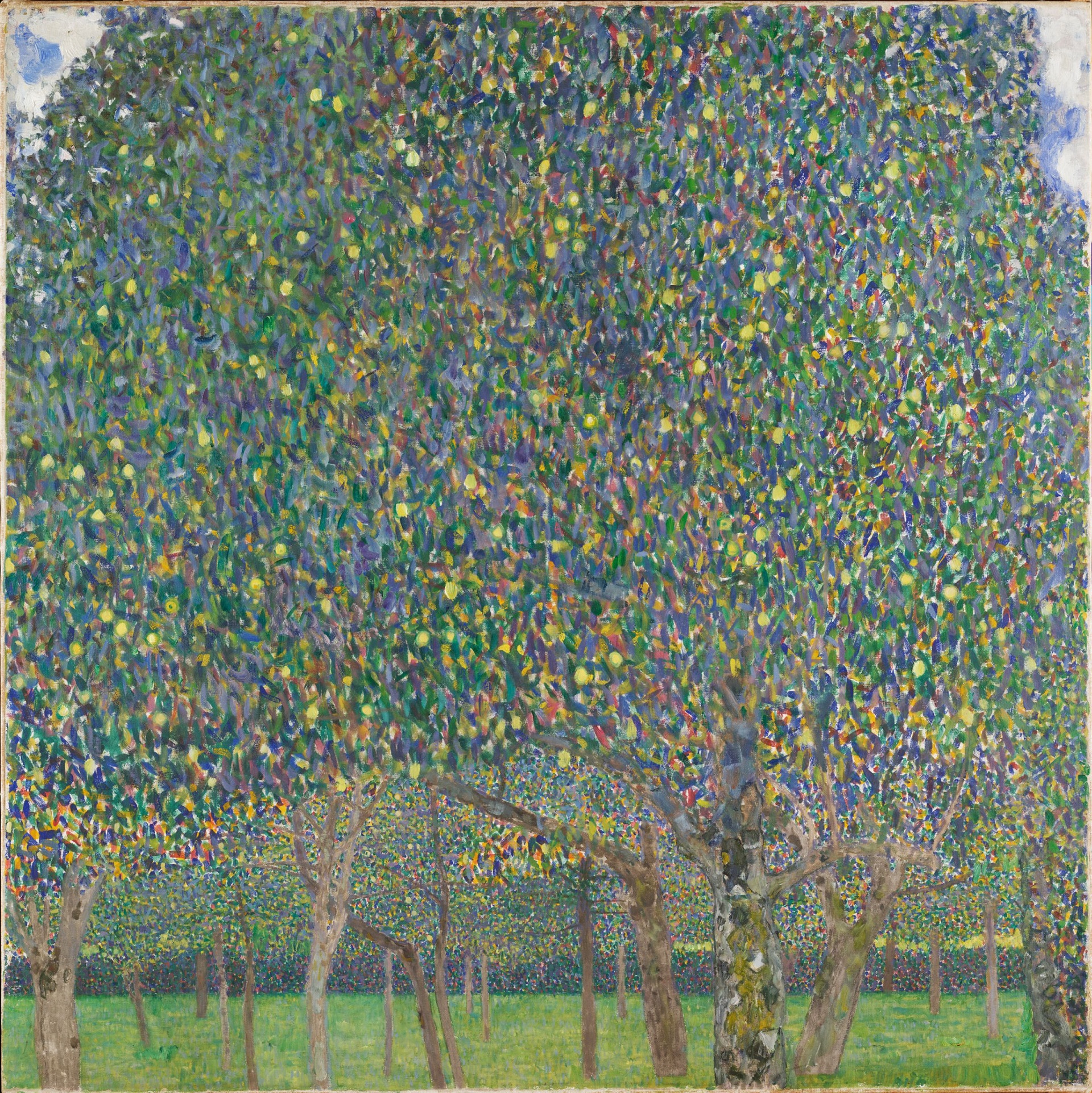art-Klimt.com
Gustav Klimt 1862-1918
Gustav Klimt - Pear Tree 1903
 Pear Tree |
From Harvard University Art Museums:
A pear tree in full bloom dominates this early landscape by Klimt, the leading proponent of modernist painting in Vienna at the turn of the last century, when the city’s artists and designers rejected the conservative attitudes of the academy and endeavored to create a new art free from historical influence. While a horizontal format is traditionally used for landscapes, Klimt chose a square canvas — a pure geometric shape that was also the Vienna Secession’s dominant decorative motif. In the flowering branches, each dab of paint indicates a single leaf, blossom, or piece of fruit. The flat, flickering field of color evokes both postimpressionist painting and Byzantine mosaics. The left side of the work has a noticeably denser application of paint than the center or the right side. Klimt continued to add to the painting, filling in these bare spots, even after giving it to Emilie Flöge, his muse and mistress, in 1903.